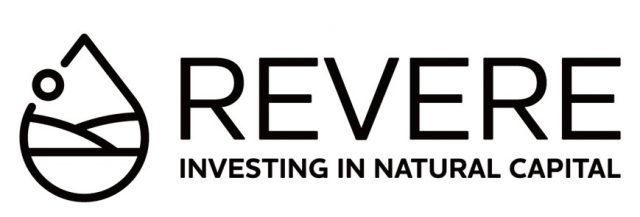Insights from the trial
**Information correct as at October 2022**
Market assessment as at October 2022
- The private finance market for nature restoration is still developing. One of the markets – Biodiversity Net Gain – will become mandatory in early 2024. Many of the rules around how different income streams can be combined (‘stacked’) are yet to be defined, and many codes that will allow ecosystem services to be monetised are still in development. Stacking refers to the concept of combining a range of revenue streams by delivering different ecosystem services on the same parcel of land.
- The emergence of several income streams designed to stimulate environmental benefits on land (such as biodiversity gains, nutrient and carbon removal) raises the question of whether multiple environmental benefits can be provided and sold from the same piece of land. The rules dictating how ecosystem service generation payments can be ‘stacked’ on the same piece of land are yet to be determined largely.
- The tax rules applied to land that has transitioned from agricultural use to generating ecosystem services is still unclear.
- There are new ecosystem service markets/codes more compatible with agricultural production in development such as the UK farm soil carbon code and the agroforestry carbon code.
- In addition, there are ecosystem service markets under development that will fund types of habitat creation designed specifically to market the climate benefit of nature restoration (see below).
Summary of Palladium’s market research
1. Carbon
Presence and viability of a marketplace:
• The voluntary market for carbon credits generated from woodland creation is growing rapidly and there are many buyers within the UK.
• UK-based native woodland creation projects are very popular with buyers, due to their high integrity and traceability of outcomes.
• Woodland Carbon Credits are currently selling for £25-40/tCO2e (July 2022).
Conclusion: An accessible revenue stream for private payments for nature
Several project developers, brokers and NGOs are working with landowners across the UK to support connection with buyers of Woodland Carbon Credits and arrangement of payments for delivering
and managing woodland creation projects.
2. Biodiversity net gain
Presence and viability of a marketplace:
• New Forest District Council and the NFNPA are already implementing the not-yet mandatory BNG requirements on certain new developments within the New Forest.
• However, there is yet to be a formal mechanism for land managers to identify and access developers seeking off-site mitigation sites.
• The proposed Natural England net gain register would fulfil this role; it is anticipated to be made available when BNG becomes mandated in early 2024.
• BNG Biodiversity Units are reportedly being sold between £9,000 and up to £25k across England (July 2022).
Conclusion: A potential revenue stream for private payments for nature if buyers can be secured
• Biodiversity Units generated from converting arable land into neutral grassland hold significant potential financial value.
• The challenge comes down to identifying local buyers and coordinating agreements that are compatible with the estate’s future use vision and other revenue streams the estate may want to access.
• Habitat banking will likely be the most suitable approach for the project landowners: it allows land managers to create habitats in advance and ‘bank’ the resulting units for sale in the future, reducing the dependency on upfront buyers.
3. Water quality
Presence and viability of a marketplace:
• The Solent catchment is comparatively advanced with its market of water quality payments due to the sensitivity of the ecosystems and degree of legacy pollution.
• Proving nutrient neutrality is required by developers within the catchment and is generating significant incentive for owners of potential mitigation sites.
• Nitrates are the applicable contaminant of concern for the project estates.
• Nitrate credits are on average being sold at £3,500 per KgTN within the New Forest catchment (July 2022).
Conclusion: A potential revenue stream for private payments for nature if buyers can be secured
• Renaturing agricultural land into natural habitats such as woodland can generate significant nitrate avoidance credits, as demonstrated within this project.
• Similarly to BNG, however, it is difficult for landowners to identify and access developers seeking nitrate reduction credits, particularly at the scale the landowners are looking to deliver.
Currently, agreements are being signed on a piecemeal basis between developers, the Local Planning Authority and landowners.
• A platform model would benefit the market where buyers and sellers could be aggregated – for example the Solent Nutrient Market Pilot which is currently being tested in a neighbouring catchment.
Ecosystem service markets under development
These will fund additional types of habitat creation designed to remove carbon from the atmosphere:
- Soil carbon code – The UK Farm Soil Carbon Code (UKFSCC) will consist of a set of formal protocols that allow farmers to quantify and verify reduced greenhouse gas emissions and/or soil carbon capture as a result of adopting regenerative farming practices. The Code will be free to use and open access to all farmers.
- Saltmarsh carbon code – A consortium of charities, scientists and financial experts are developing scientific and revenue models plus a certification scheme for UK projects wanting to attract private investment by selling companies the carbon benefits that will result from restoring saltmarshes.
- Hedgerow carbon code – The Game & Wildlife Conservation Trust (GWCT) has begun piloting the new Hedgerow Carbon Code. The code will encourage hedgerow habitat improvements to increase the amount of carbon stored by hedges, contributing to British farming’s net-zero target and boosting biodiversity. It will allow land managers to calculate and verify the carbon capture potential of their hedgerows, enabling them to trade carbon credits – a market with a potential value of £60m.
- Wilder carbon – A standard is being developed to enable nature restoration projects that sequester carbon to generate carbon credits.
- Agroforestry carbon code – The feasibility of generating carbon credits from UK agroforestry projects is currently being tested (autumn 2022).
Existing scheme with further developments planned:
- Peatland carbon code – the Peatland Code is an existing voluntary standard enabling UK peatland projects to market the climate benefit of restoration however it appears peatland in the new forest is not currently eligible for this code. We hope further developments will be made to the code so that peat restoration can be funded privately here.




